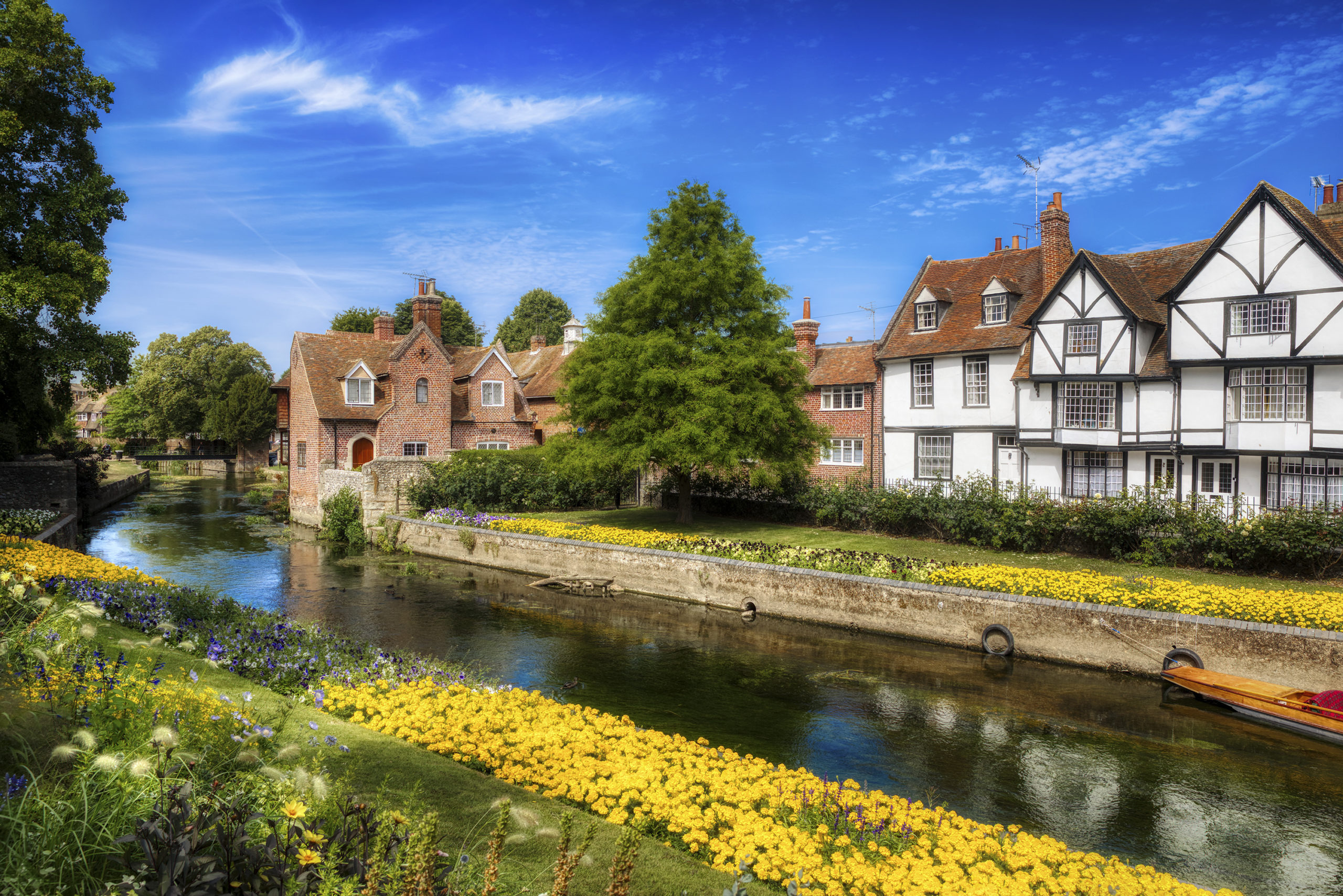Is Kent Posh? Social History and Class Through the Ages

The picturesque landscape of Kent has long contributed to its reputation as an affluent county
The question of whether Kent is 'posh' reveals as much about our contemporary understanding of class as it does about the county's rich and varied social history. Kent's proximity to London, its fertile agricultural lands, and strategic position as England's gateway to Europe have all contributed to a complex social landscape that has evolved dramatically over centuries. This article explores how Kent's reputation and social structure have transformed from medieval times through to the present day.
"Kent, sir - everybody knows Kent - apples, cherries, hops, and women." - Charles Dickens, Pickwick Papers
Medieval Kent: A Unique Social Structure
In medieval England, Kent stood apart from other counties due to its distinctive inheritance custom known as 'gavelkind'. Unlike the Norman-imposed primogeniture (where the eldest son inherited everything), Kentish gavelkind provided for equal division of land amongst all sons. This custom had profound implications for Kent's social structure, creating:
- A broader distribution of land ownership
- A stronger class of independent smallholders (known as 'yeomen')
- Fewer extremely large estates compared to other counties
- A reputation for relative social equality and independence
The Peasants' Revolt of 1381 began in Kent, with the county playing a pivotal role in this uprising against unfair taxation and restrictive labour laws. This further cemented Kent's reputation for independence and a certain egalitarianism not seen elsewhere.
While Kent certainly had its share of aristocratic families and large landowners, the county's social structure was notably different from the rigid feudal hierarchy found elsewhere in England. The Archbishop of Canterbury was the predominant landowner, with church lands extending across much of the county. The medieval Kentish saying "neither lord nor vassal" reflected the county's relative freedom from rigid feudal structures.
Tudor and Stuart Kent: Royal Connections
The Tudor period marked a significant change in Kent's social landscape, with Henry VIII's dissolution of the monasteries redistributing vast swathes of church land to the gentry and rising merchant classes. This period saw the construction of magnificent houses like Leeds Castle and Hever Castle, the childhood home of Anne Boleyn.
Kent's proximity to London made it increasingly attractive to wealthy merchants and courtiers seeking country estates within reach of the capital. The county became home to:
Numerous Tudor mansions built by wealthy courtiers and merchants, establishing Kent as a fashionable county for the elite
Development of the Kentish 'great houses' and expansion of estates by London's wealthy families
Growing prosperity from agriculture and trade creates a strong 'middling sort' of wealthy farmers and traders
Kent's fertile soil earned it the nickname 'The Garden of England' during this period, with its agricultural wealth supporting a prosperous society. The county's fruit orchards, hop gardens and arable lands created significant wealth for landowners and yeomen farmers alike.
Industrial Kent: A Tale of Two Counties
The industrial revolution brought stark contrasts to Kent's social landscape. While west and north Kent became increasingly industrialised with paper mills, cement works, and dockyards creating working-class communities, much of the county retained its agricultural character.
This period established a social divide that persists in some form to this day:
Industrial North and West Kent
The Medway towns, Dartford, and other industrial centres developed large working-class populations employed in industries such as:
- Shipbuilding at Chatham Dockyard
- Papermaking along the Darent and Medway rivers
- Cement production in the Medway Valley
- Coal mining in East Kent from the late 19th century
Rural and Residential Kent
Meanwhile, central and southern Kent remained largely agricultural or became increasingly popular for country estates for the wealthy, particularly areas like:
- Sevenoaks and Tunbridge Wells, which developed as fashionable residential towns
- The Weald of Kent, with its historic houses and villages
- East Kent's rural landscapes and coastal towns
The arrival of the railways in the 19th century transformed Kent into London's first commuter belt, allowing the wealthy to maintain country houses while working in the capital. Tunbridge Wells, in particular, developed as a genteel spa town favoured by the middle and upper classes, establishing Kent's reputation for refined living.
Modern Kent: A Complex Social Geography
Today, Kent's reputation for being 'posh' varies dramatically depending on which part of the county is being discussed. The county includes some of southeast England's most affluent areas alongside pockets of significant deprivation.
Kent's Social Geography Today
Modern Kent encompasses areas ranging from the extremely affluent to those facing considerable socioeconomic challenges:
Areas with Higher Socioeconomic Status
Sevenoaks - Consistently ranked among the most expensive places to live outside London, with historic connections to the aristocracy and now home to many high-earning professionals.
Tunbridge Wells - Retains its historic reputation for gentility and affluence, with elegant Regency architecture and a high proportion of professional residents.
Villages of the Weald - Picturesque locations like Penshurst, Chiddingstone, and Speldhurst maintain high property values and traditional rural character.
Areas with Mixed or Changing Profiles
Canterbury - Historic cathedral city with affluent areas alongside student populations and more diverse socioeconomic communities.
Whitstable and Deal - Coastal towns that have undergone significant gentrification as Londoners seek second homes or relocate permanently.
Ashford and Maidstone - Major towns with varied socioeconomic profiles, including both affluent suburbs and areas of deprivation.
Areas Facing Socioeconomic Challenges
Parts of Medway towns - Including areas of Chatham, Gillingham and Strood that continue to address the legacy of industrial decline.
Thanet - Including parts of Margate and Ramsgate that have experienced economic challenges following the decline of traditional seaside tourism.
Former Kent coalfield areas - Communities in East Kent that still bear the social and economic impact of mine closures in the 20th century.
The 'Garden of England' Image and Class Perception
Kent's enduring nickname as the 'Garden of England' has played a significant role in shaping perceptions of the county as somewhat refined and affluent. This image, first attributed to Henry VIII after sampling Kent cherries, has been reinforced through centuries of literature, art, and tourism promotion.
The county's proximity to London has made it a natural 'escape' for the capital's wealthy residents since Tudor times, with good transport links allowing for country living within reach of urban employment. The development of the high-speed rail link to London has further cemented Kent's role as a commuter county, with many areas seeing significant influxes of London professionals seeking a better quality of life.
Estate agents and property developers have capitalised on Kent's historic reputation, with marketing often emphasising its 'exclusive' nature and historic connections. This has contributed to property price increases in many areas, particularly those with good transport links to London.
"Kent encompasses the full spectrum of English society within its borders - from the stately homes of the Weald to the industrial heritage of the Medway, it resists any simple classification." - Contemporary social historian
Conclusion: Kent's Complex Class Identity
So, is Kent posh? The answer is inevitably nuanced. Kent's social history reveals a county that has never been easily categorised, from its medieval reputation for relative equality through its industrial development to its current diverse socioeconomic landscape.
While parts of Kent undoubtedly feature among the most affluent areas of southern England, the county as a whole presents a much more complex picture. Kent's identity has been shaped by:
- Its unique historical development and customs
- The contrast between its industrial and agricultural heritage
- Its relationship with London as both a market for goods and a source of wealthy residents
- Regional variations in development and prosperity
Perhaps what makes Kent fascinating from a social history perspective is precisely this resistance to simple categorisation. The 'Garden of England' contains within it the full spectrum of English society, from ancient aristocratic estates to former mining communities, from gentrified coastal towns to rural farming communities largely unchanged for centuries.
Kent's reputation for refinement certainly has historical foundations, but the full story of the county's social development reveals something far richer and more diverse than any single label could capture.
Further Reading
If you've enjoyed this exploration of Kent's social history, you might also be interested in:
